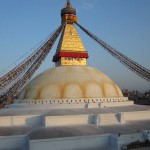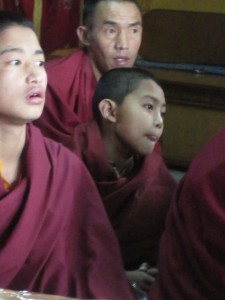Rinpoche retired as Abbot of Pal Gyi Ling Jangsem Kunga Ling at the end of his 2018 residence and gave the grounds to Lamas who started a new monastic community.
Lama Tsering Wangdu Rinpoche’s monastic seat was located Tusal, Boudanath, a short walk from the Great Stupa. Lama Wangdu Rinpoche founded the monastery in 2004, after the Dalai Lama asked him to teach a new generation of monastic and lay practitioners in the Chod and Shije tradition. With financial support from the Dalai Lama and a group of patrons in Nepal, Rinpoche acquired and renovated the old Shekar Chode monastery. Renamed Pal Gyi Tingri Langkor Jangsem Kunga Ling, or just Pal Gyi Ling, the monastery is home to approximately twenty monks in all stages of training, along with Rinpoche and those that help manage the monastery buildings and grounds.
While training as Chodpas in the tradition of Padamapa Sangye and Machik Labdron, the monks of Pay Gyi Ling also studied and practiced Jigme Lingpa’s Longchen Nyingthig. Monks also learned to read TIbetan, studied English, mastered ritual instruments and practices such as torma-making and playing musical instruments, and spent countless hours practicing Chod. Monks that completed the basic training, which takes ten to twelve years, could go on to undertake the traditional three year closed retreat. Rinpoche provided monks with housing, food, robes, and practice materials, as many of their families did not have the means to support them.
Pal Gyi Ling also served a large group of lay practitioners who came from all over the world to study Chod, learn the yogic songs and dances of the tradition, and participate in daily practice. Some practitioners lived in Kathmandu, studying at the monastery for weeks or months, while others visited to deepen their understanding before returning to their homelands to continue their practice.
The monastery was also an important part of life for local Nepalis and TIbetans. Twice each month, Rinpoche offered a public Chod feast along with feasts on Buddhist holy days and during Losar. Rinpoche also held a public audience that attracted hundreds of people each day.


